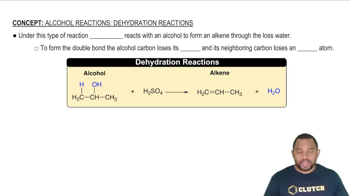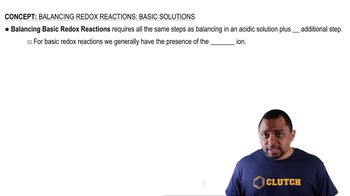Here are the essential concepts you must grasp in order to answer the question correctly.
Disproportionation Reactions
Disproportionation reactions are a type of redox reaction where a single substance is both oxidized and reduced, resulting in two different products. In these reactions, one species undergoes an increase in oxidation state while another undergoes a decrease. Understanding the oxidation states of the elements involved is crucial for identifying how to balance the reaction correctly.
Recommended video:
Alcohol Reactions: Dehydration Reactions
Balancing Redox Reactions
Balancing redox reactions involves ensuring that the number of atoms and the charge are equal on both sides of the equation. This can be achieved using the half-reaction method, where the oxidation and reduction half-reactions are balanced separately before combining them. It is essential to account for electrons transferred during the oxidation and reduction processes to maintain charge balance.
Recommended video:
Balancing Basic Redox Reactions
Acidic and Basic Solutions
The pH of the solution affects the species present and the balancing of redox reactions. In acidic solutions, protons (H⁺) are abundant, which can influence the formation of products and the balancing of charges. Conversely, in basic solutions, hydroxide ions (OH⁻) are present, which can also affect the reaction dynamics. Recognizing the conditions of the solution is vital for correctly balancing the disproportionation reactions.
Recommended video:
Balancing Basic Redox Reactions



